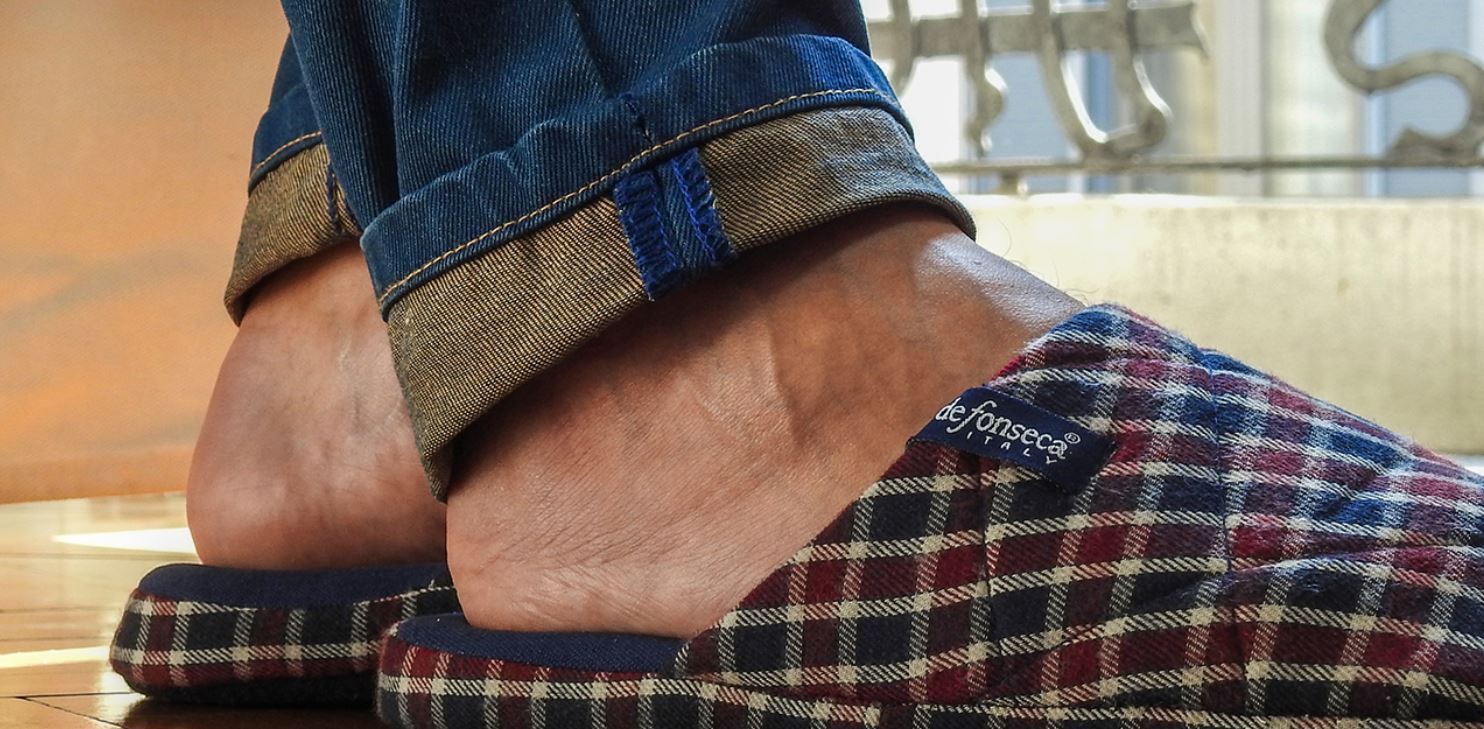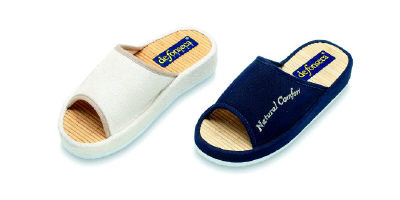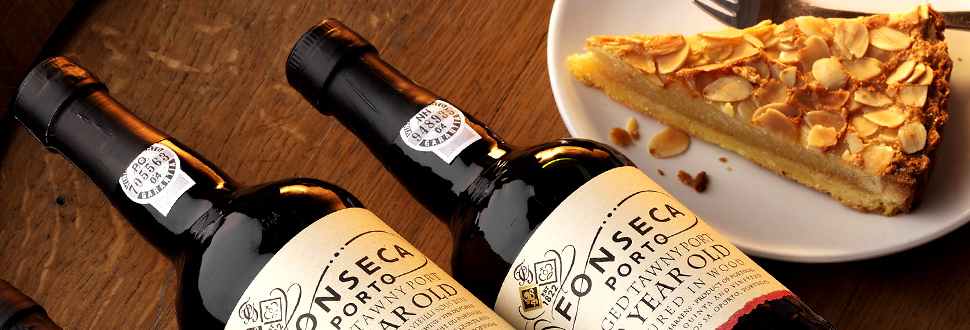de Fonseca of Italy :
Fonseka Wine from Portugal
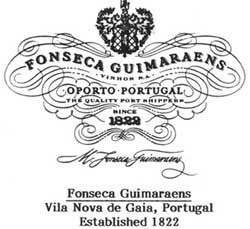 The house of Fonseca Guimaraens is one of the most famous Port houses in Portugal and in Europe. The history of the company lies in the late 1700s, in a company called Fonseca & Monteiro located in Operto, Portugal. The Fonseca family was of Brazilian origin. The present firm was founded formally in 1822, when Manuel Pedro Guimaraens acquired control of the company.
The house of Fonseca Guimaraens is one of the most famous Port houses in Portugal and in Europe. The history of the company lies in the late 1700s, in a company called Fonseca & Monteiro located in Operto, Portugal. The Fonseca family was of Brazilian origin. The present firm was founded formally in 1822, when Manuel Pedro Guimaraens acquired control of the company.
The company owns fine properties in the wine growing region of Douro, in the panoramic Mendiz Valley and the beautiful Tavera Valley.
Steve Meacham in his article ‘Worth Bottling’ penned for a travel magazine speaks of his visit to the picturesque Jose Maria da Fonseca wine museum in charming Azeitao, 40 minutes’ drive from Lisbon.
“The man who gave his name to this winery and museum is one of the legends of the Portuguese wine industry, the founder of an eponymous family-run company now employing the sixth generation of his descendants. Born in 1804, Fonseca set up his first winery in the Setubal district south of Lisbon when he was 30. His reputation was secured with two types of wine -Setubal Muscatel and Periquita – which he created within a year of each other in 1849-50.”
The Fonseca museum is one of the “Signature Experiences” that a wine enthusiast can indulge in Portugal. As he explains “Even from the street, it’s obvious Fonseca is special. What was built in the 19th century as Azeitao’s manor house was given a complete makeover in 1923 by a celebrated Swiss architect. Ernesto Korrodi. The visitors are taken to the property’s three ancient wine cellars – Adega da Mnta, Adega dos Teares Novos and Adega dos Teares Velhos”
More details are available at the company website at www.fonseca.pt
Fonseka cigars from Dominican Republic
 Fonseca, is the name of two brands of premium cigar, one produced on the island of Cuba for Habanos SA, the Cuban state-owned tobacco company, and the other produced in the Dominican Republic for MATASA. One of the world’s famous names in cigars, medium body and blended from the choicest tobaccos grown in the Cibao Valley in the Dominican Republic. Foneseca cigars feature an outstanding Connecticut
Fonseca, is the name of two brands of premium cigar, one produced on the island of Cuba for Habanos SA, the Cuban state-owned tobacco company, and the other produced in the Dominican Republic for MATASA. One of the world’s famous names in cigars, medium body and blended from the choicest tobaccos grown in the Cibao Valley in the Dominican Republic. Foneseca cigars feature an outstanding Connecticut 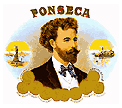 Shade (natural) or Connecticut Broadleaf (maduro) leaves. The Triangulare is one the most difficult of all cigar shapes to create and offers you a rich flavor concentrated
Shade (natural) or Connecticut Broadleaf (maduro) leaves. The Triangulare is one the most difficult of all cigar shapes to create and offers you a rich flavor concentrated
due to it’s unique shape.
History of the Cigar
On October 12, 1492 in the gulf of San Salvador in the Bahamas, Christopher Columbus discovered tobacco. He and his crew saw the natives there growing the tobacco and soon realized that it would become a valuable commodity. Columbus’ crew carried the hobby of smoking tobacco home with them. The Mayan verb “sikar” meaning “to smoke” later became the Spanish noun cigarro.
The largest of the islands was called Colba by the native Taino Indians, which Spanish tongues twisted to “Cuba.” They also had a name for the curious dried leaves they set on fire in order to inhale the smoke – cohiba or cojoba.
The cigar had obtained a great deal of popularity in the first half of the nineteenth century but the period involving the Civil War could easily be called the Golden Age of the Cigar in The United States. By the year of Victoria’s Diamond Jubilee (1898) the annual consumption of cigars in the U.S. had surpassed 4 billion. In 1920 the number of cigars sold had reached 7 billion. Everyone who wished to smoke, no matter his financial means, could find a cigar of agreeable flavour at a reasonable price.
Cigar smoking enjoyed consistent support until the downfall of Cuban cigars, when Fidel Castro emerged in Cuba in 1959 and toppled the hated government of dictator Fulgencio Batista. Suddenly, an island that since Columbus’s arrival was called “Pearl of the Antilles” was now looked upon aghast and with alarm. American retaliation against Castro took the form of an economic embargo but, according to JFK’s press secretary Pierre Salinger, not until Kennedy, assured himself a stockpile of his favourite Havana’s. Called into the Oval office one afternoon, Salinger was order to obtain a thousand Petit Upmans by the next morning. He returned and proudly reported completion of the assignment. With a satisfied smile Kennedy opened his desk, took out a long sheet of paper, and signed his name to it, therewith imposing by the stroke of his pen an embargo on all imports of Cuban cigars that would remain in effect for decades. The embargo on importation of Havana cigars led directly to an exodus of Cuban cigar makers and the growth of competition in premium cigar manufacturing in the Dominican Republic, Honduras and other Latin American countries.
In the Vuelta, Abajo and Partido regions of Cuba, the one to the west of Havana and the other to the south, are found ideal conditions for growing outstanding cigar tobacco. All Havanas are produced with tobacco cultivated exclusively in these two regions. Added to this coincidence of nature is a long tradition of cigar making going back many centuries. The resulting depth of experience and skill at every level of the Cuban cigar industry supports the creation of the world’s finest cigars.
The brands at the very top of the market are Cohiba, Dunhill, Montecristo, and Davidoff. The most popular Habana of them all worldwide is the Montechristo No 4. Today Bolivar is one of the marks most in demand in Great Britain. Cohibas are manufactured in a mansion in Laguito, a suburb of Havana, Cohiba was created in 1966 as Havana’s premier marque for diplomatic use. From 1982 it was offered to the public. Only the pick of the tobacco crop, aged to perfection is used which means Cohibas are cigars to be taken very seriously.
A Cigar called FONSECA
It was the Spaniard Don Francisco Fonseca who made the registration of the mark under his surname, in 1907. The factory was set up in several buildings in the capital city, until it was finally established in Quivicán, a quaint small town in the province of Havana. Fonseca immigrated to the US and continued his business. Fonseca cigars quickly became a success and Don Francisco was responsible for innovative practices such as wrapping his cigars in fine Japanese tissue paper (as they still are today) and packaging cigars in tin tubes
Since the early years the Fonseca brand became renowned and cherished for the quality and appearance of its cigars. It is the only Habano in the market, which is wrapped, in very thin and almost transparent silky paper.
 |
| Two Fonseca Habana’s in the collection of the author |
Today the Fonseca brand is more popular in Spain more than anywhere else in the world. Its medium strength flavour is appreciated by many cigar aficionados in that country.
Reference: History of cigars adapted from information presented in the Internet by Simply Cigars, UK.
More details and ordering facilities are available from the following sites :
http://cigarsupply.com/wfonseca.htm
http://www.bonitasmokeshop.com/fonseca.htm

